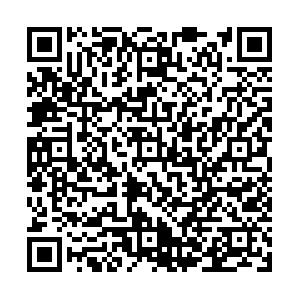Clinical features and prognosis analysis of posttraumatic infarction in the basal ganglia in children
-
摘要: 目的 探讨儿童外伤后基底节区梗死的临床和影像学特征及预后,提高诊治水平。 方法 分析2010年8月—2015年8月入住陆军总医院附属八一儿童医院神经发育科并确诊外伤后基底节区梗死的19例患儿临床和影像学资料,对预后进行随访。 结果 本组男11例,女8例,发病年龄6个月~5岁,3岁以下15例(78.9%)。床坠落伤8例(42.1%),跌伤6例(31.6%),打击伤3例(15.8%),碰撞伤2例(10.5%)。19例均表现明显的偏瘫,出现在外伤后24 h内7例(36.8%),24~48 h 8例(42.1%),48 h~7 d 4例(21.1%)。左侧偏瘫11例,右侧偏瘫8例。肌力为0~2级7例,2+~4级12例。伴烦躁7例,呕吐5例,言语不清4例,抽搐2例。19例头颅MRI检查均显示基底节区长T1长T2信号,FLAIR高信号,DWI呈明显高信号,无占位效应。19例均给予内科保守治疗,并进行康复训练。10例住院2周,9例住院3周。其中11例出院时肌力正常。随访时间6个月~5年,2例失访,17例神经系统查体未见异常,13例6岁以下患儿进行Gesell发育评估,均于边缘至正常。 结论 儿童外伤后基底节区梗死多发生于婴幼儿,外伤一般较轻,偏瘫程度不等,头颅MRI检查有助于早期发现病灶,经过积极内科治疗预后较好。Abstract: Objective To explore the clinical and imaging features of posttraumatic infarction in the basal ganglia in children for improving the level of diagnosis and treatment. Methods The clinical and imaging data of 19 cases of posttraumatic infarction in the basal ganglia in our department between August, 2010 and August, 2015 were retrospectively analyzed and the follow-up was carried to evaluate the outcome. Results Among the patients, 11 were male and 8 were female. The onset age ranged from 6 months to 5 years, and 15 cases (78. 9%) were under 3 years. All patients had preceding mild head trauma. Eight cases (42. 1%) fell from bed and 6 cases (31. 6%) tumbled. Three patients (10. 5%) were hit and 2 patients were crashed. Hemiplegia occurred in all the patients. It happened in 24 hours after trauma in 7 cases (36. 8%), 24 to 48 hours in 8 cases (42. 1%), and 48 hours to 7 days in 4 cases (21. 1%). Eleven cases showed left hemiplegia and 8 cases presented right hemiplegia. Strength ranged from 0 to 2 level in 7 cases, and 2 + To 4 level in 12 cases. The accompanying symptoms involved restlessness in 7 cases, vomiting in 5 cases, alalia in 4 cases, and convulsion in 2 cases. The cranial MRI in all patients showed long T1 and long T2 signal, Fl AIR high signal, DWI obviously high signal in the basal ganglia. There were no placeholder effects. All the patients got the medicine treatment and rehabilitation training. Ten patients were hospitalized for 2 weeks and 9 for 3 weeks. Eleven patients presented normal strength when leaving hospital. Seventeen patients were followed up for 6 months to 5 years who showed normal in nervous system examination. Thirteen cases under the age of 6 years showed critical to normal by Gesell development evaluation. Conclusion Posttraumatic infarction in the basal ganglia mainly occurs in infants and young children. The cause of the head injury is usually mild. Hemiplegia is the primary symptom and the strength varies obviously. Cranial MRI plays an important role in the early identification of the lesions. Most patients have favorable prognosis with the early diagnosis and treatment.
-
Key words:
- Child /
- Trauma /
- Infarction /
- Basal ganglia /
- Clinical feature
-

 点击查看大图
点击查看大图
计量
- 文章访问数: 150
- HTML全文浏览量: 19
- PDF下载量: 0
- 被引次数: 0



 下载:
下载:
